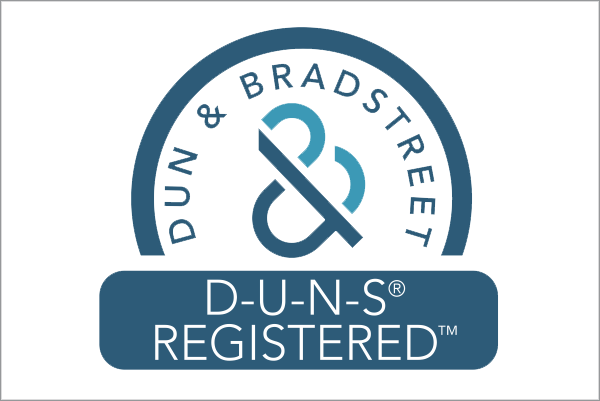Unlock Digital Success: Introduction to Digital Marketing
Unlock Digital Success: Introduction to Digital Marketing
In today’s hyperconnected world, digital marketing has become the cornerstone of business success. Whether you’re a startup, small business owner, or marketing professional looking to expand your skills, understanding the fundamentals of digital marketing is essential for thriving in the online landscape.
Understanding the Fundamentals of Digital Marketing Concepts
What is Digital Marketing?
Digital marketing encompasses all marketing efforts that use electronic devices or the internet to connect with current and prospective customers. Unlike traditional marketing channels, digital marketing allows businesses to reach their target audience through search engines, websites, social media, email, and mobile apps.
The digital marketing landscape continues to evolve with technology, creating new opportunities for businesses to engage with consumers in meaningful ways. As internet usage continues to grow worldwide, digital marketing has become an indispensable tool for businesses of all sizes.
Key Terms Used in Digital Marketing Strategies
To navigate the world of digital marketing effectively, you should familiarize yourself with these essential terms:
- Search Engine Optimization (SEO): The practice of optimizing your website to rank higher in organic search engine results pages (SERPs).
- Content Marketing: Creating and distributing valuable, relevant content to attract and engage a target audience.
- Social Media Marketing: Using social media platforms to promote products or services and build community.
- Email Marketing: Sending targeted messages to potential or current customers via email.
- Pay-Per-Click (PPC): An advertising model where advertisers pay each time a user clicks on their ad (often through Google Ads).
- Affiliate Marketing: Partnering with others to promote your products in exchange for a commission.
- Influencer Marketing: Collaborating with influential people on social media to promote your brand.
- Marketing Automation: Using software to automate repetitive marketing tasks.
Various Types of Digital Marketing Channels
Digital marketing encompasses several channels, each with unique strengths:
- Website Marketing: Your website serves as your digital headquarters, often being the first touchpoint for potential customers.
- Search Engine Marketing: This includes both SEO (organic) and paid search strategies through platforms like Google Ads.
- Social Media Marketing: Platforms like Facebook, Instagram, LinkedIn, Twitter, and TikTok allow businesses to connect with their audience directly.
- Email Marketing: Despite being one of the oldest digital marketing channels, email marketing continues to deliver one of the highest returns on investment.
- Content Marketing: Blog posts, videos, podcasts, infographics, and other content types help establish authority and build trust.
- Mobile Marketing: Strategies specifically designed for mobile devices, including SMS marketing and in-app advertising.
- Owned, Earned, and Paid Media: A comprehensive strategy involves assets you own (website, blog), publicity you earn (reviews, mentions), and advertising you pay for.
The Role of Digital Marketing in Business Growth
Digital marketing has revolutionized how businesses grow in several key ways:
- Global Reach: Even small businesses can reach a worldwide audience at a fraction of traditional advertising costs.
- Targeted Advertising: Digital tools allow precise targeting based on demographics, behavior, interests, and more.
- Measurable Results: Unlike traditional marketing, digital marketing provides detailed analytics about campaign performance.
- Personalization: Customer data enables highly personalized marketing messages and experiences.
- Cost-Effectiveness: Digital marketing often provides better return on investment compared to traditional channels.
- Relationship Building: Social media and email marketing foster ongoing relationships with customers.
The Importance of Target Audiences in Marketing
Understanding your target audience is fundamental to digital marketing success. A well-defined target audience allows you to:
- Create more relevant content and messaging
- Choose the right marketing channels
- Develop products and services that meet actual needs
- Allocate your marketing budget more efficiently
- Improve customer experience through personalization
Market segmentation helps divide your broad target audience into specific subgroups based on demographics, psychographics, behavior, and geography. This enables more precise messaging and better results.
Digital Marketing Metrics and Analytics
Data-driven decision-making sets digital marketing apart from traditional approaches. Key metrics to track include:
- Website Traffic: Total visitors, traffic sources, and page views
- Conversion Rate: The percentage of visitors who complete a desired action
- Click-Through Rate (CTR): The percentage of people who click on your link or ad
- Bounce Rate: The percentage of visitors who leave after viewing only one page
- Customer Acquisition Cost (CAC): How much it costs to acquire a new customer
- Customer Lifetime Value (CLV): The total revenue a business can expect from a single customer
- Return on Investment (ROI): The profitability of your marketing efforts
Tools like Google Analytics, social media analytics, and email marketing platforms provide valuable insights for optimizing your marketing strategy.
Ethical Considerations in Online Marketing Practices
As digital marketing becomes more sophisticated, ethical considerations have gained importance:
- Data Privacy: Respecting user privacy and adhering to regulations like GDPR and CCPA
- Transparency: Being honest about marketing practices and avoiding deceptive tactics
- Accessibility: Ensuring digital content is accessible to people with disabilities
- Diversity and Inclusion: Representing diverse audiences in marketing materials
- Environmental Impact: Considering the carbon footprint of digital operations
Discover Effective Digital Marketing Strategies and Techniques
Components of a Successful Content Marketing Plan
Content marketing serves as the foundation for many digital marketing efforts. A successful content marketing plan includes:
- Clear Goals: Define what you want to achieve with your content (brand awareness, lead generation, customer retention).
- Audience Understanding: Develop detailed buyer personas to guide content creation.
- Content Audit: Assess existing content and identify gaps and opportunities.
- Content Calendar: Plan your content production schedule in advance.
- Content Creation: Develop high-quality, relevant content in various formats.
- Distribution Strategy: Determine how you’ll share content across different channels.
- Performance Measurement: Track key metrics to evaluate content effectiveness.
Content creation should focus on providing value rather than making sales pitches. Educational, entertaining, or inspiring content typically performs better than promotional material.
Social Media Strategies to Boost Engagement
Social media marketing requires more than just posting regularly. Effective strategies include:
- Platform Selection: Focus on platforms where your target audience is active.
- Content Mix: Balance promotional content with educational and entertaining posts.
- Visual Elements: Incorporate high-quality images and videos to increase engagement.
- Community Building: Respond to comments and messages promptly to foster relationships.
- Hashtag Strategy: Research and use relevant hashtags to increase discoverability.
- Posting Schedule: Determine optimal posting times for each platform.
- Social Listening: Monitor conversations about your brand and industry.
According to recent statistics, video content continues to dominate social media engagement across platforms, making it an essential component of any social strategy.
Search Engine Optimization for Better Visibility
SEO remains crucial for digital marketing success. Key SEO practices include:
- Keyword Research: Identify terms your audience is searching for using tools like Google Keyword Planner.
- On-Page SEO: Optimize title tags, meta descriptions, headings, and content for target keywords.
- Technical SEO: Ensure your website loads quickly, is mobile-friendly, and has a secure connection (HTTPS).
- Off-Page SEO: Build high-quality backlinks from reputable websites.
- Local SEO: Optimize for local searches if you have a physical location.
- User Experience: Create a website that’s easy to navigate and provides value to visitors.
SEO is a long-term strategy that requires patience and consistent effort, but the organic traffic it generates can provide sustainable growth.
Email Marketing Campaigns to Cultivate Leads
Despite the rise of new channels, email marketing remains one of the most effective digital marketing strategies:
- List Building: Implement strategies to grow your mailing list with qualified leads.
- Segmentation: Divide your email list based on demographics, behavior, or preferences.
- Personalization: Go beyond using the recipient’s name by tailoring content to their interests.
- Automated Sequences: Set up welcome emails, abandoned cart reminders, and other automated campaigns.
- Mobile Optimization: Ensure emails display properly on mobile devices.
- Testing: Continuously A/B test subject lines, content, and calls to action.
With an average ROI of $42 for every $1 spent, email marketing deserves a central place in your digital marketing strategy.
Pay-Per-Click Advertising for Immediate Results
While organic strategies like SEO take time to yield results, PPC advertising can drive traffic immediately:
- Campaign Structure: Organize your campaigns logically by product, service, or goal.
- Keyword Selection: Choose relevant keywords with appropriate search volume and competition.
- Ad Copy: Create compelling headlines and descriptions that encourage clicks.
- Landing Pages: Design specific pages that align with your ad content.
- Bid Strategy: Determine how much you’re willing to pay per click based on your goals.
- Ad Extensions: Utilize extensions to provide additional information and increase ad visibility.
- Remarketing: Target users who have previously interacted with your website.
Platforms like Google Ads, Microsoft Advertising, and social media ad networks offer various PPC options to fit different business needs and budgets.
Customer Journeys Through Data-Driven Insights
Understanding the customer journey helps optimize the marketing funnel:
- Awareness Stage: Potential customers become aware of a problem or opportunity.
- Consideration Stage: They research potential solutions.
- Decision Stage: They choose a solution provider.
- Retention Stage: They become repeat customers and advocates.
By mapping the customer journey, you can identify touchpoints where digital marketing can influence decisions. Analytics tools help track user behavior across these stages, revealing opportunities for optimization.
Mastering Social Media Marketing for Enhanced Outreach
Choosing the Right Social Media Platforms
Not all social media platforms are created equal for business purposes. Consider these factors when selecting platforms:
- Audience Demographics: Each platform attracts different age groups and interests.
- Content Type: Match your content strengths with platform preferences (e.g., visual content for Instagram).
- Industry Relevance: Some platforms work better for certain industries (e.g., LinkedIn for B2B).
- Resource Allocation: Managing multiple platforms effectively requires time and expertise.
It’s better to excel on a few relevant platforms than to spread your efforts too thin across many.
Content Strategies Tailored for Social Platforms
Each social media platform has unique content requirements:
- Facebook: Diverse content types with a focus on video and community building.
- Instagram: High-quality visuals and short-form video content.
- Twitter: Timely updates, industry news, and conversation participation.
- LinkedIn: Professional content, thought leadership, and industry insights.
- TikTok: Creative, authentic short-form videos.
- Pinterest: Inspirational and educational visual content.
Repurposing content across platforms with platform-specific modifications can maximize efficiency.
Building Community Through Engagement
Social media success depends on building an engaged community:
- Consistent Presence: Post regularly and respond promptly to comments and messages.
- Value Provision: Share useful information rather than constant promotions.
- User-Generated Content: Encourage and showcase content created by your audience.
- Conversation Facilitation: Ask questions and create polls to spark discussions.
- Authentic Voice: Develop a consistent brand voice that resonates with your audience.
Remember that social media is about being social—two-way communication builds stronger relationships than one-way broadcasting.
Enhancing SEO Techniques for Optimal Website Performance
Keyword Research for Content Creation
Effective keyword research involves:
- Identifying Seed Keywords: Start with broad terms related to your business.
- Expanding with Tools: Use tools like Google Keyword Planner, Ahrefs, or SEMrush to find related terms.
- Analyzing Search Intent: Determine what users are looking for when they search for specific terms.
- Evaluating Competition: Assess how difficult it will be to rank for particular keywords.
- Long-Tail Keywords: Target specific, less competitive phrases with clear intent.
A balanced approach includes targeting high-volume competitive keywords and more specific long-tail terms.
Optimizing Website Structure
Search engines favor well-structured websites:
- Clear Hierarchy: Organize content logically with categories and subcategories.
- URL Structure: Create descriptive, keyword-rich URLs.
- Internal Linking: Connect related pages to distribute page authority and help users navigate.
- Mobile Responsiveness: Ensure your site works well on all devices.
- Page Speed: Optimize loading times through image compression, code minification, and caching.
- Schema Markup: Implement structured data to help search engines understand your content.
A good website structure improves both search engine crawling and user experience.
Navigating Email Marketing Best Practices
Crafting Compelling Subject Lines
Your email subject line determines whether recipients open your message:
- Clarity: Clearly communicate what’s inside the email.
- Brevity: Keep subject lines under 50 characters.
- Personalization: Include the recipient’s name or reference their behavior.
- Urgency: Create a sense of timeliness when appropriate.
- Questions: Pose intriguing questions to spark curiosity.
- A/B Testing: Test different subject lines to identify what works.
Avoid spam trigger words and misleading claims that can damage trust and deliverability.
Segmenting Your Audience
Email segmentation dramatically improves performance:
- Demographic Segmentation: Age, gender, location, etc.
- Behavioral Segmentation: Past purchases, website activity, email engagement.
- Psychographic Segmentation: Values, interests, lifestyle.
- Customer Journey Stage: New subscribers, active customers, lapsed customers.
Segmented campaigns can deliver up to 760% more revenue than non-segmented campaigns, according to Campaign Monitor.
Understanding Analytics and Measuring Success
Defining Key Performance Indicators
Effective digital marketing measurement starts with identifying the right KPIs:
- Brand Awareness KPIs: Impressions, reach, social followers, website traffic.
- Engagement KPIs: Click-through rates, time on page, social interactions.
- Conversion KPIs: Lead generation, sales, sign-ups.
- Customer Value KPIs: Repeat purchase rate, average order value, customer lifetime value.
- ROI KPIs: Cost per acquisition, marketing spend ratio, return on ad spend.
Choose KPIs that align with your specific business goals and stage of growth.
Using Analytics Tools
Several tools help measure digital marketing performance:
- Google Analytics: Comprehensive website analytics.
- Google Search Console: Search performance and technical SEO insights.
- Social Media Analytics: Platform-specific insights about audience and engagement.
- Email Marketing Analytics: Open rates, click rates, and conversion tracking.
- CRM Systems: Customer relationship data and sales attribution.
- Heat Mapping Tools: Visual representation of user behavior on your website.
Integrating these tools provides a more complete picture of marketing performance.
Conclusion: Your Digital Marketing Journey Begins Now
Digital marketing offers unprecedented opportunities to connect with customers, build your brand, and grow your business. By understanding the fundamental concepts and implementing strategic approaches across various channels, you can create effective campaigns that deliver measurable results.
Remember that digital marketing is both an art and a science—creativity and data analysis must work together. As technologies and consumer behaviors evolve, successful marketers continue learning and adapting their strategies.
Whether you’re looking to enhance your professional skills or grow your business, this introduction to digital marketing provides a foundation for your journey toward digital success. Start implementing these concepts today, measure your results, and continuously refine your approach based on performance data and emerging trends.
FAQs About Digital Marketing
What is digital marketing introduction?
Digital marketing encompasses all marketing efforts that use electronic devices or the internet to connect with current and prospective customers. It includes search engine optimization, content marketing, social media marketing, email marketing, and more channels that help businesses reach their target audience online.
How to add Google certification introduction to digital marketing to CV?
When adding a Google Digital Marketing certification to your CV, list it under the “Certifications” section with the full title of the certification, the issuing organization (Google), the date of completion, and a brief description of key skills acquired. You can also highlight specific modules completed that are relevant to the position you’re applying for.
What is digital marketing introduction PPT?
A digital marketing introduction PPT is a PowerPoint presentation that covers the basics of digital marketing, including its definition, key channels, strategies, and benefits for businesses. These presentations are often used in educational settings, corporate training, or client onboarding to explain digital marketing concepts visually.
What have you learned in this digital marketing introduction class?
In this digital marketing introduction, you’ve learned about the fundamental concepts of digital marketing, various marketing channels (SEO, social media, email, PPC), audience targeting strategies, content marketing approaches, analytics and measurement techniques, and how these elements work together to create effective digital marketing campaigns that drive business growth.






